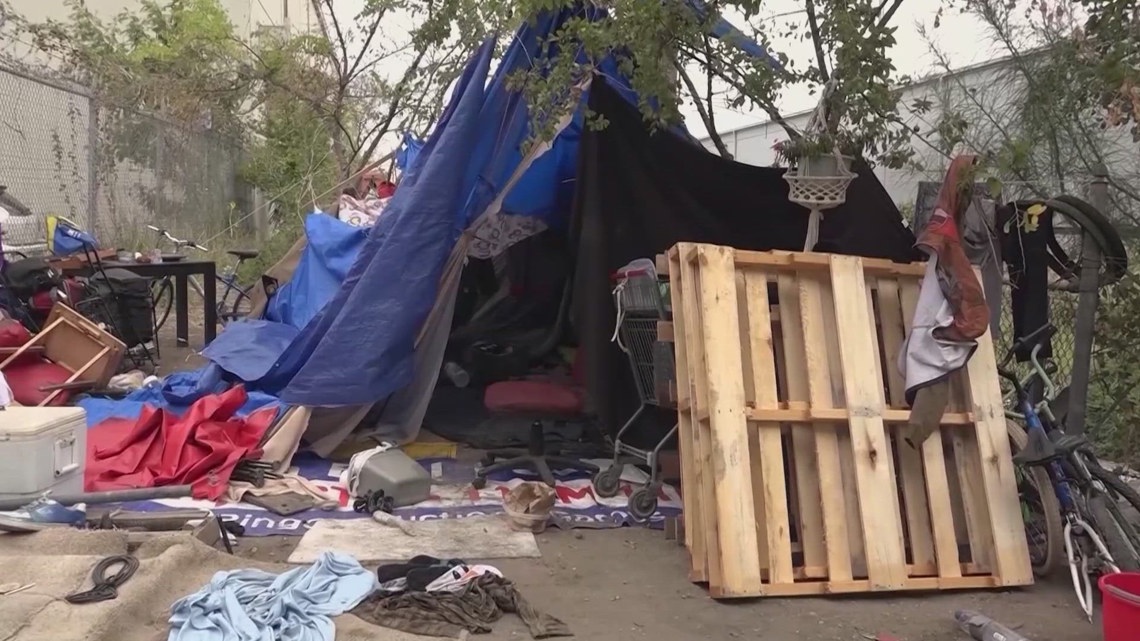
Christian Assistance Ministry’s Dawn White-Fosdick hopes the plan leads to improving the options for permanent supportive housing and mental health care services.
SAN ANTONIO — A coalition of organizations in San Antonio are looking ahead to next year as the Alliance to House Everyone’s 2025 action plan aims to improve resources for those living on the streets.
“Everybody has to work together on common goals to address homelessness,” said Katie Wilson, executive director of Close to Home.
The 2025 action plan is part of a five-year strategy that launched during the days of COVID-19.
Among the eight strategic priorities, they include expanding housing options, improving street outreach coordination and preventing homelessness and reducing inflow.
Wilson stressed there’s a community-wide focus on upstream strategies to prevent homelessness involving families, older adults and people living on fixed incomes.
“Also, we’re looking at how we can more efficiently get more people into housing, so partnering with our landlords and property owners in the community and then looking at kind of different populations: youth and young adults, people fleeing domestic violence,” Wilson said.
The 2024 point-in-time count revealed a nearly 7 percent increase in those experiencing homelessness, which accounted for both sheltered and unsheltered people.
“There will also be a need for resources for people who are impacted by homelessness,” said Dawn White-Fosdick, president and CEO of Christian Assistance Ministry (CAM).
The San Antonio City Council’s budget for fiscal year 2025 includes more than $40 million of funding to go toward homeless investment for “prevention services, outreach, sheltering, permanent supportive housing, rapid rehousing, and abatements.” ‘
The City of San Antonio anticipates sheltering 500 unsheltered individuals.
White-Fosdick praised the coordination between CAM and numerous other organizations to assist the homeless community, however she believes more must be done to increase the affordable housing stock and improve mental health resources.
“We might be helping them as an organization like CAM by providing them food and clothing and getting them better so that they can access support, but often those beds, that shelter or a permanent place to live is not available,” White-Fosdick said. “Often, those beds, that shelter or a permanent place to live is not available. We have clients who may not have insurance, they don’t have a diagnosis yet and they’re not really able to make an appointment and utilize the system the way it exists.”
The Alliance to House Everyone is expected to establish the goals of the next five-year plan in 2025.
